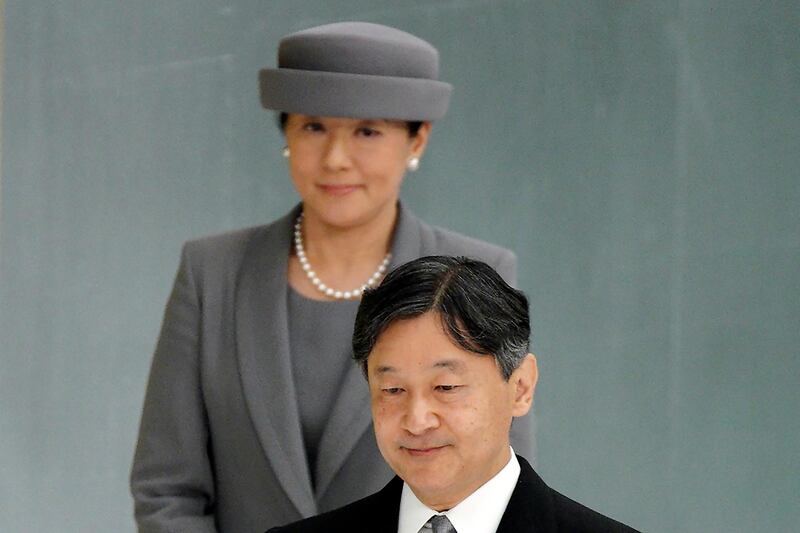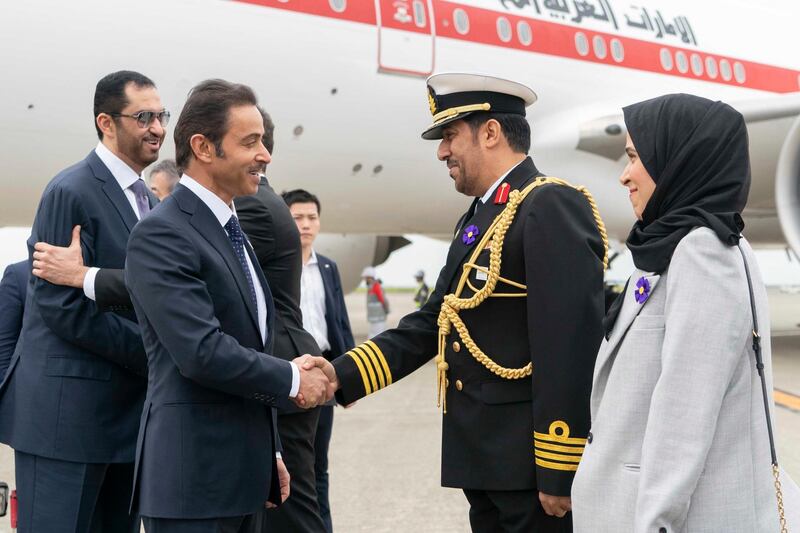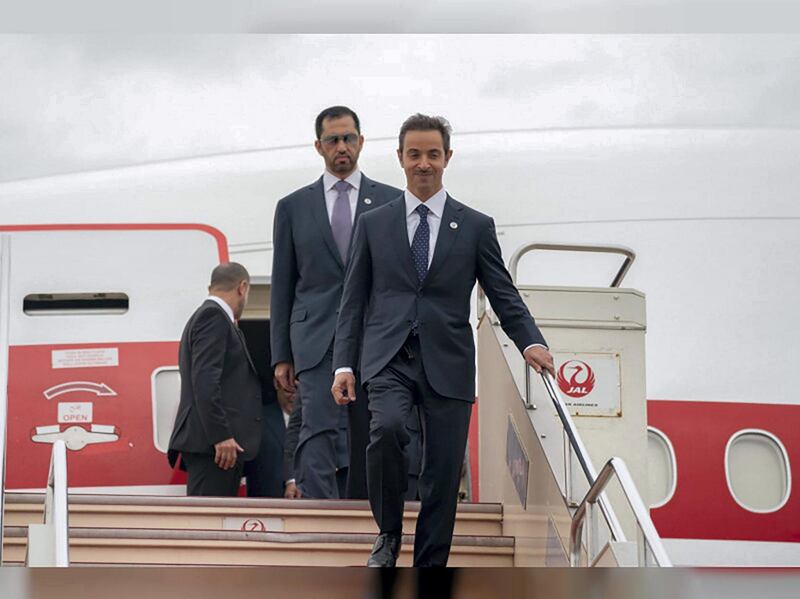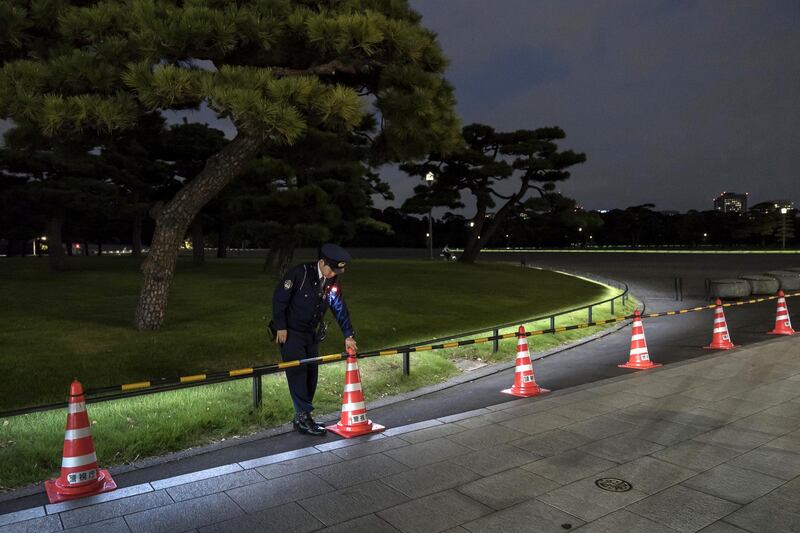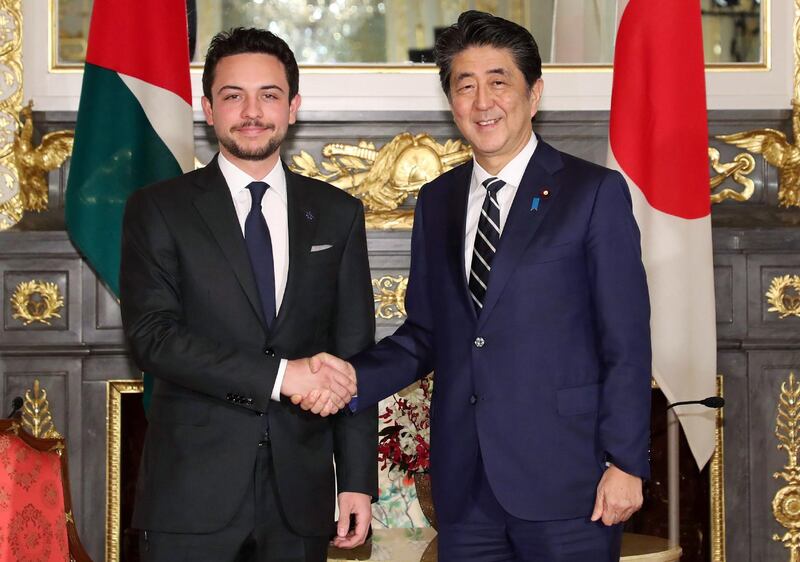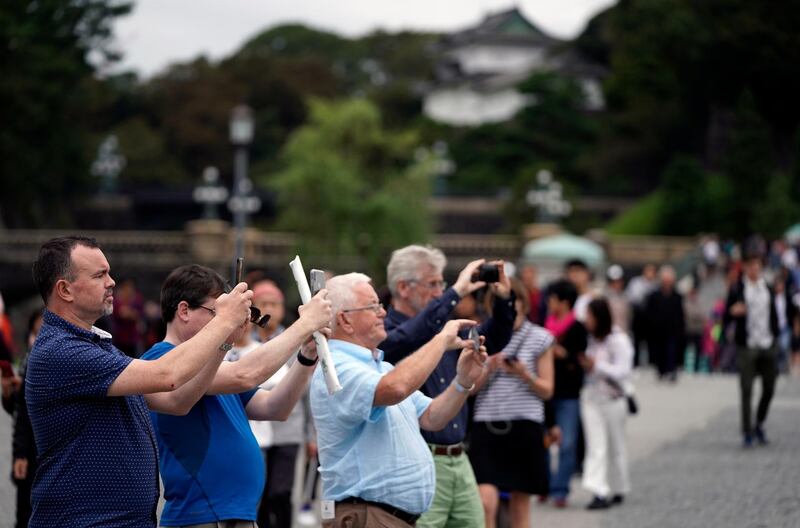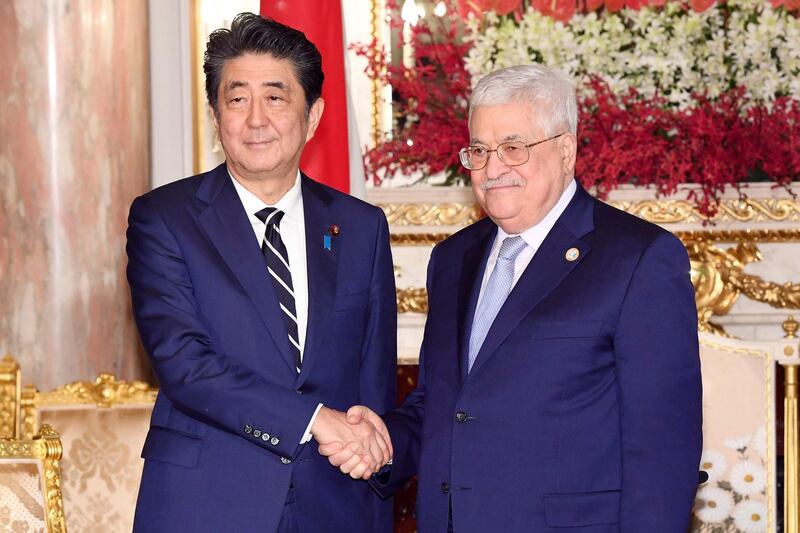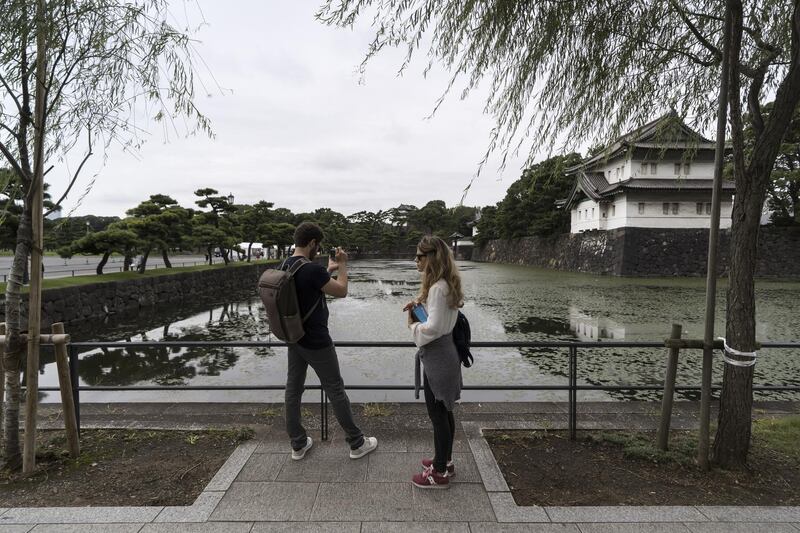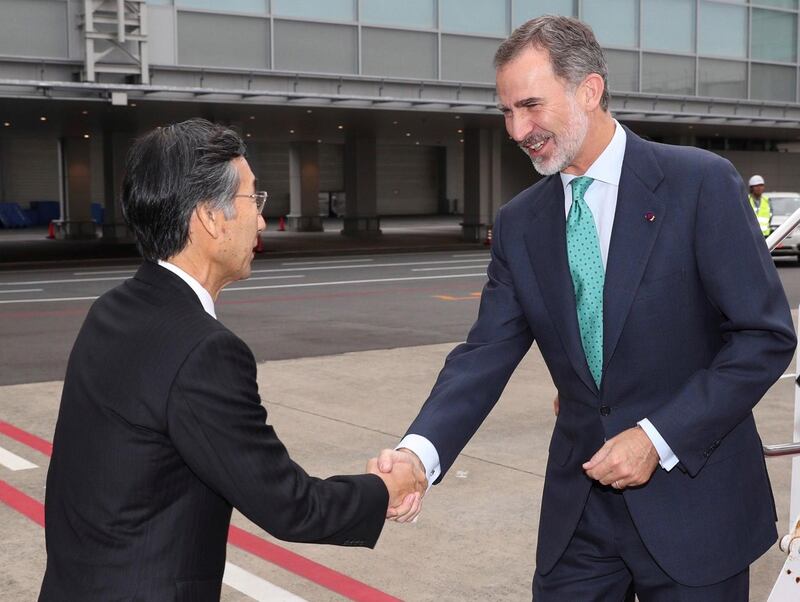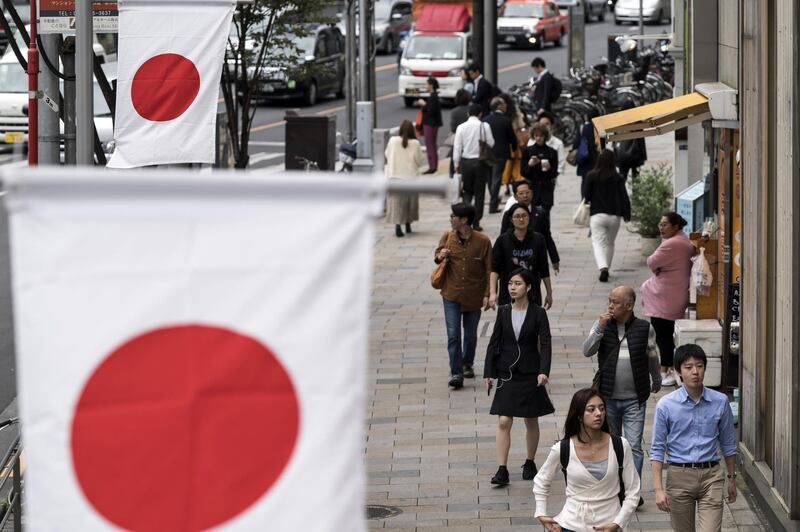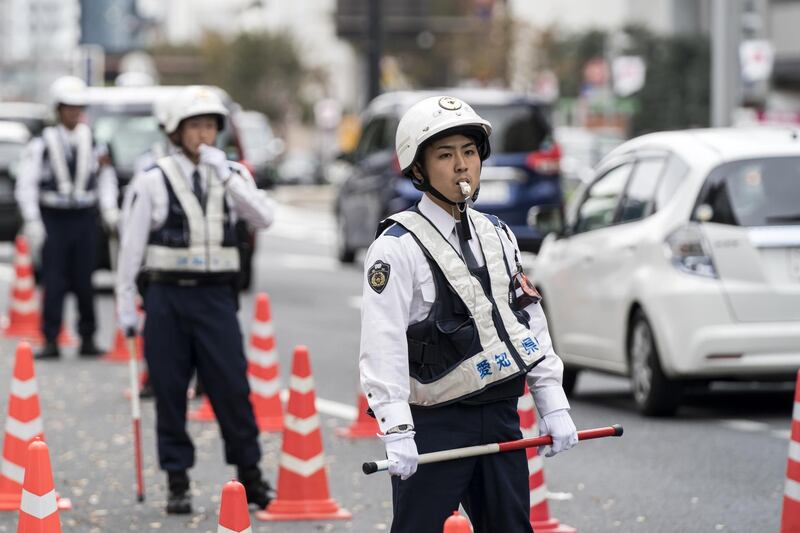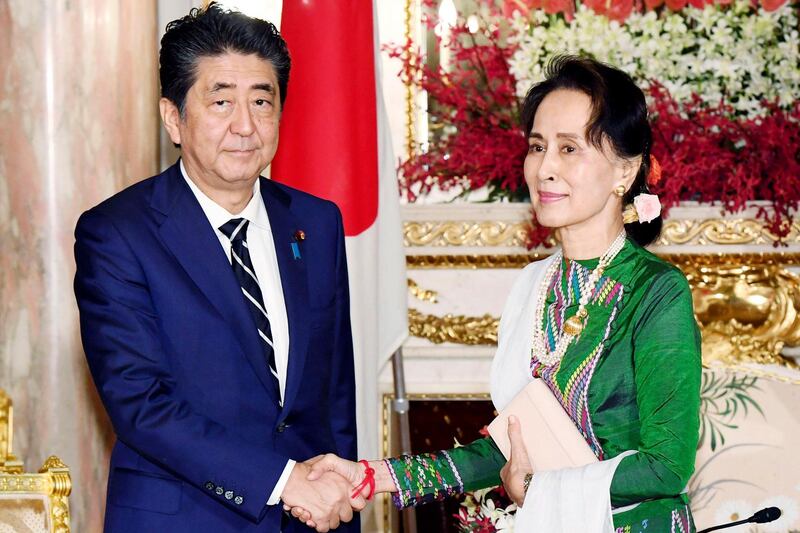Japan is abuzz ahead of a ceremony on Tuesday marking Emperor Naruhito's ascension to the Chrysanthemum Throne.
It is one of several formal ceremonies for Naruhito, 59, who has been a full-fledged emperor since succeeding in May after the abdication of his father, Akihito.
Sheikh Hazza bin Zayed Al Nahyan, Deputy Chairman of Abu Dhabi Executive Council, arrived in Tokyo on Monday to attend the enthronement ceremony, which is scheduled to be held at the Imperial Palace.
Attending on behalf of President His Highness Sheikh Khalifa bin Zayed Al Nahyan and at the invitation of the Japanese government, Sheikh Hazza will take part in the ceremony along with other heads of states and dignitaries.
Showcasing a reign
The enthronement ceremony marks the high point of succession rituals that began in May and will last through the spring.
Tuesday's ceremony allows Naruhito to proclaim himself Japan's 126th emperor in a ritual dating back to the 7th century.
Historians say the modern enthronement rituals are largely meant to allow the government to showcase the monarchy to win public support and to preserve the country's cultural heritage.
Western-style banquets and a procession have been added to "to bolster national prestige and influence. The Imperial family's own events used to be more modest," said historian and monarchy expert Eiichi Miyashiro, who is also a journalist.
A proclamation and a banzai
Despite the time, cost and effort put into it, the ceremony itself will last only 30 minutes. Its climax is the emperor's proclamation before some 2,000 guests.
Naruhito will wear a formal brownish-orange robe that has been dyed in sappanwood and Japanese wax tree bark and a black headdress decorated with an upright tail — as his father did 30 years ago — in a ceremony at Matsu-no-ma, the Imperial Palace's most prestigious hall.
He will make his proclamation from the Imperial Throne "Takamikura," a 6.5-meter (21-foot) -high decorative structure resembling a gazebo.
'Reiwa' style
Naruhito and Masako have been warmly welcomed by the Japanese public.
The couple won praise when they chatted with President Donald Trump and first lady Melania Trump without an interpreter at a banquet in May.
Naruhito has pledged to follow his father's commitment to pacifism and sympathy for those facing hardship.
Toyota, not Rolls Royce
Naruhito is largely following his father's examples, but not in the choice of a royal car for his parade.
While Akihito used a Rolls Royce Corniche III imported from Britain 30 years ago, Naruhito and Masako will be in a Toyota Century convertible, customized with raised rear seats to provide well-wishers a good view.
PARDONS
To mark the occasion, Abe's Cabinet is granting pardons to about 550,000 people convicted of petty crimes such as traffic violations and election fraud. The pre-war custom of clemency by the emperor has triggered criticism as being undemocratic and politically motivated.
Court banquets
Naruhito will host a 3-hour court banquet Tuesday night, attended by foreign dignitaries and representatives from Japan's administrative, legislative and judicial branches and their spouses.
Foreign guests will be escorted to observe the Imperial Throne and the Empress' seat on display at the Pine Hall before entering the banquet hall, where a dinner will be served while traditional Japanese court music is performed live, ceremony organizers said.
Abe's diplomacy rush
The enthronement ceremony is also being used for diplomacy by Abe, who is separately hosting a dinner Wednesday, though Naruhito and Masako won't be there.
Guests include Britain's Prince Charles, US Transportation Secretary Elaine Chao, Chinese Vice President Wang Qishan and South Korean Prime Minister Lee Nak-yon.
